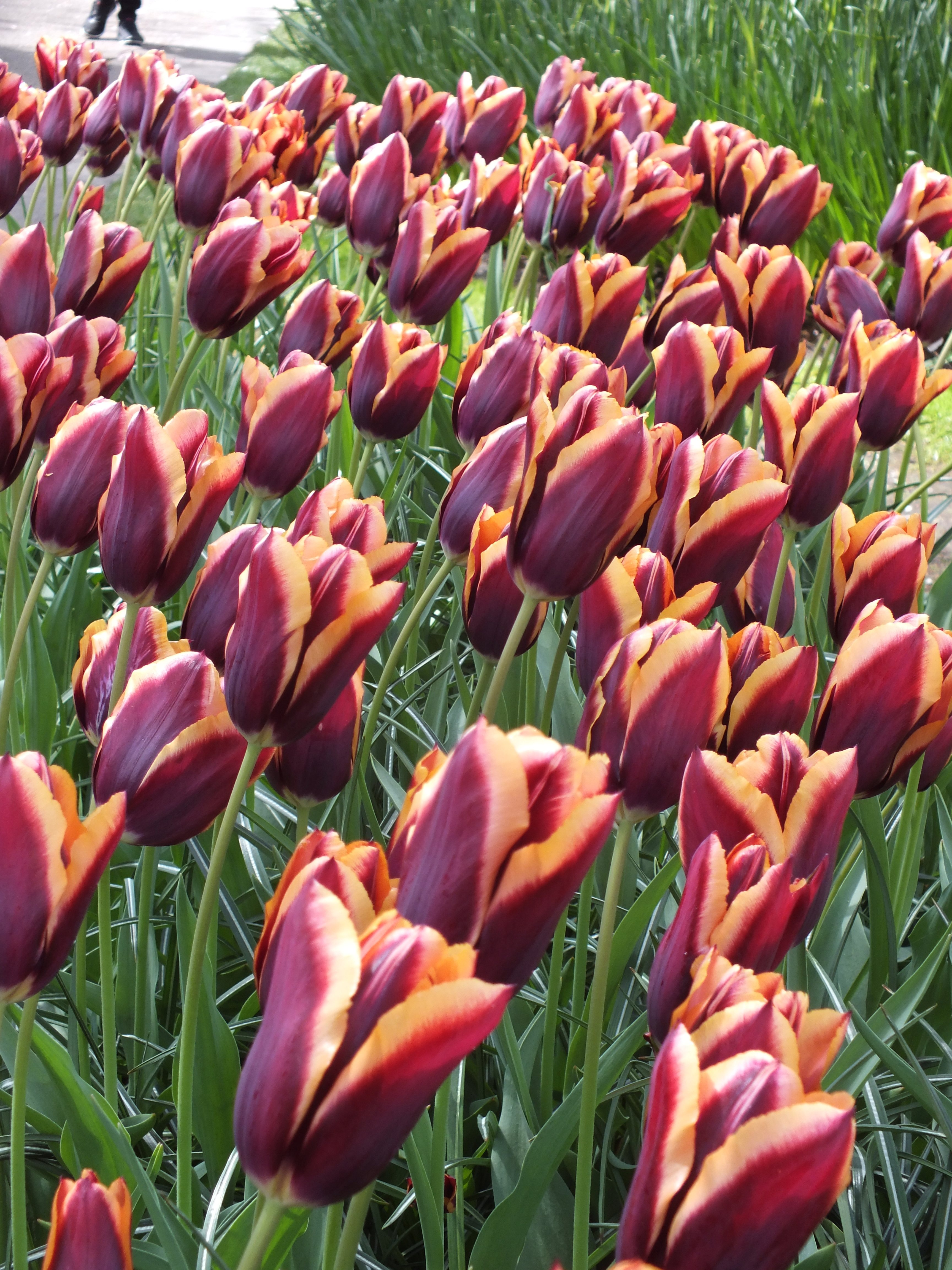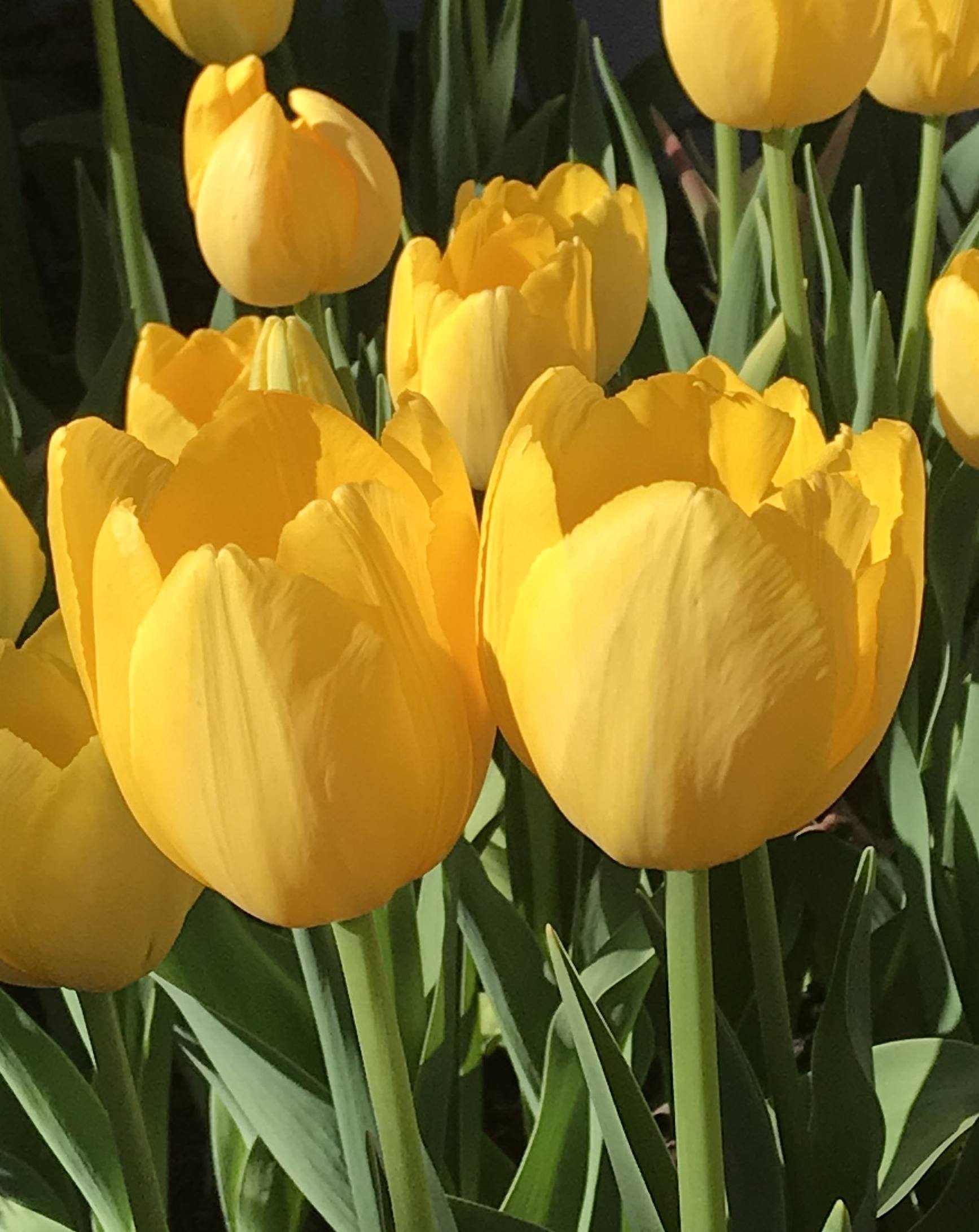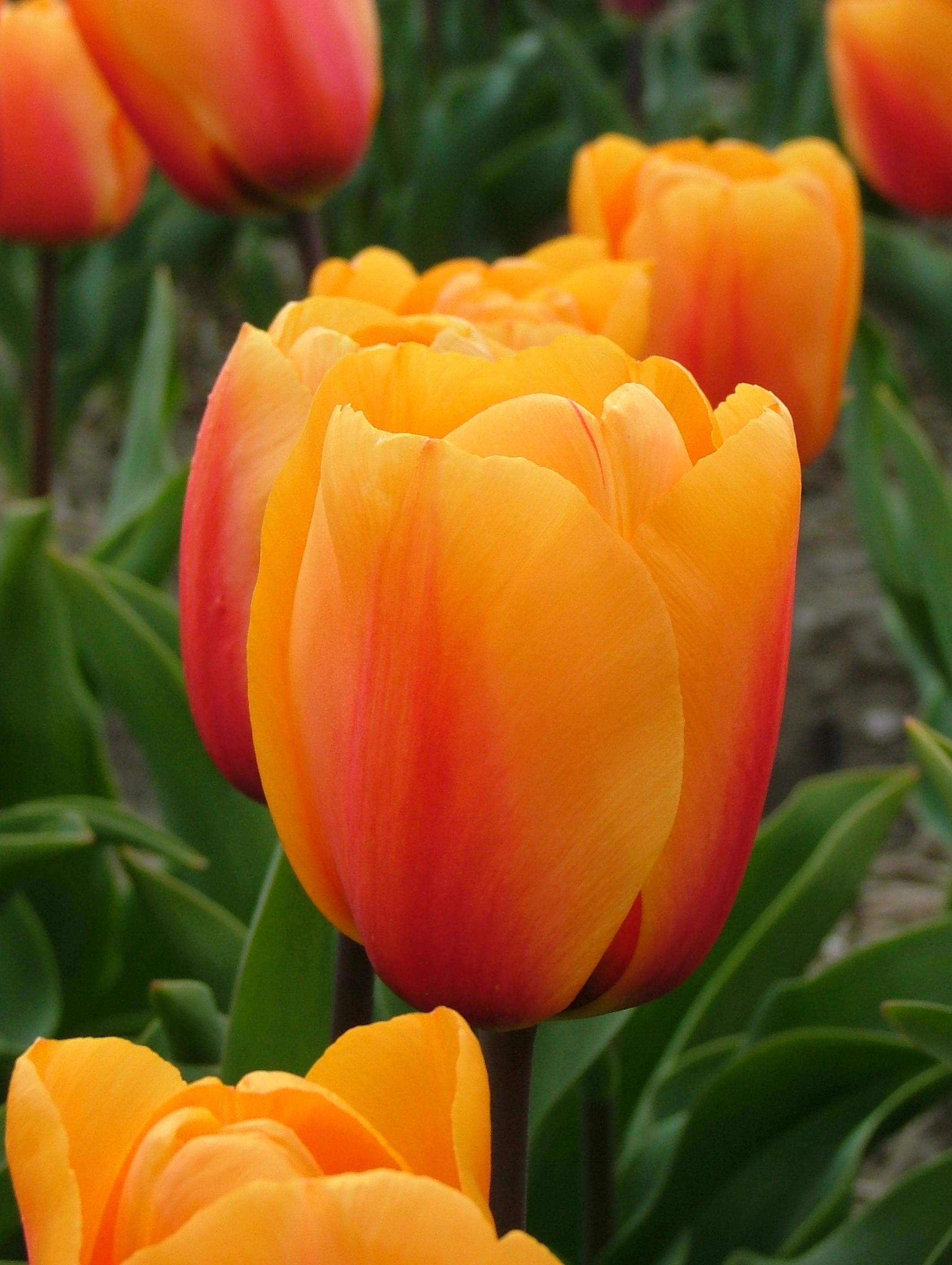This site uses cookies – Learn more.
The History of Tulips
The History of Tulips
Every fall we begin preparing tulips for their journey to our gardens by planting bulbs in the park. Curious visitors sometimes ask our team of horticulture experts and volunteers if we are sowing crops of onions and potatoes, due to the appearance of the bulbs. But really what we are sowing is a promise that spring will once again bloom anew. Right now at Madison Square Park, 10,000 brightly blooming tulips are scheduled to herald in the start of spring.
Tulips are indigenous to mountainous areas with temperate climates, with their native range extending from eastern Europe to central Asia, and stretching south to northern Africa. Tulips were cultivated in Constantinople as early as 1055, and their blooms were the symbol of the Persian Empire. In modern history, tulips are associated with the Netherlands, which remains the world’s largest producer of commercial tulip plants, producing as many as three billion bulbs annually.
These plants have historically been quite popular. In 1637, the sale of tulips caused what is now considered to be the first recorded speculative bubble in history. At the peak of “tulip mania,” some single tulip bulbs sold for more than 10 times the annual income of a skilled artisan.
Tulips are ephemeral plants. Their flowers only last a few weeks in spring before the bulbs return to dormancy, sleeping below ground while waiting to flower anew with the following spring. At Madison Square Park, our gardens are planted with a fresh set of bulbs each year, and the previous season’s plants are distributed to visitors at the end of their growing season.
(Photo Credit: Van Engelen)









